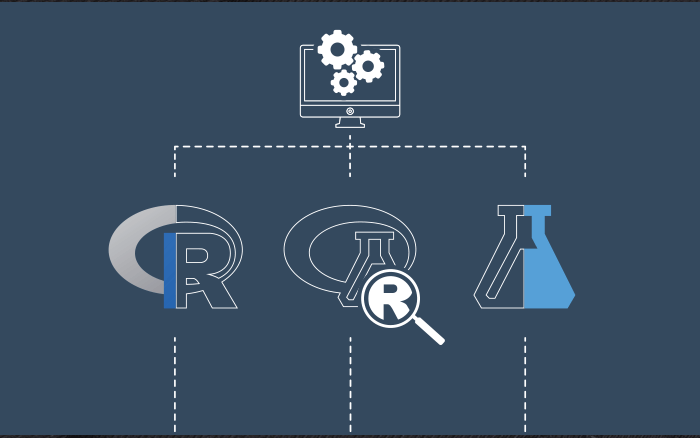
(R Example for Citizen Data Scientist & Business Analyst)
n <- floor(runif(1000)*10) t <- table(n) barplot(t)
Overview
The first line generates a list of random numbers.
The table function counts the number of occurences for each generated number. barplot creates a bar chart based on the table data.
Getting the random numbers
runif will generate 1000 uniformly distributed numbers between 0 and 1. Because we multiply by 10 we get numbers between 0 and 10.
runif(1000)*10
[1] 7.346433511 5.560346758 0.762020829 2.611504081 6.582468385 9.571311316 [...] [997] 8.736503848 6.504455155 5.203101230 9.900331229
The floor function removes the digits after the decimal point, so we only get natural numbers between 0 and 9.
floor(runif(1000)*10)
[1] 4 4 7 5 6 4 7 6 3 3 4 5 6 3 3 8 0 3 8 4 7 0 3 9 7 4 9 7 1 2 5 6 5 3 1 5 3 [...] [963] 7 3 9 9 9 3 1 1 6 3 3 3 9 4 5 1 5 9 2 8 3 6 2 3 4 0 8 7 5 2 9 0 0 0 1 3 4 [1000] 3
Counting value occurrences with table
table(n)
n 0 1 2 3 4 5 6 7 8 9 98 98 99 102 111 105 88 103 101 95
Plotting the data with barplot
Once you have a table using barplot is really straightforward. Use the documentation if you want to specify the plot size or add axis labels.
barplot(table(floor(runif(200)*4)), xlab="Generated Numbers", ylab="Occurrences", border="red")
Excel formula for Beginners – How to Average numbers in Excel
R Examples for Beginners – Plotting a uniform distribution in R
Disclaimer: The information and code presented within this recipe/tutorial is only for educational and coaching purposes for beginners and developers. Anyone can practice and apply the recipe/tutorial presented here, but the reader is taking full responsibility for his/her actions. The author (content curator) of this recipe (code / program) has made every effort to ensure the accuracy of the information was correct at time of publication. The author (content curator) does not assume and hereby disclaims any liability to any party for any loss, damage, or disruption caused by errors or omissions, whether such errors or omissions result from accident, negligence, or any other cause. The information presented here could also be found in public knowledge domains.
Learn by Coding: v-Tutorials on Applied Machine Learning and Data Science for Beginners
Latest end-to-end Learn by Coding Projects (Jupyter Notebooks) in Python and R:
All Notebooks in One Bundle: Data Science Recipes and Examples in Python & R.
End-to-End Python Machine Learning Recipes & Examples.
End-to-End R Machine Learning Recipes & Examples.
Applied Statistics with R for Beginners and Business Professionals
Data Science and Machine Learning Projects in Python: Tabular Data Analytics
Data Science and Machine Learning Projects in R: Tabular Data Analytics
Python Machine Learning & Data Science Recipes: Learn by Coding
R Machine Learning & Data Science Recipes: Learn by Coding
Comparing Different Machine Learning Algorithms in Python for Classification (FREE)
There are 2000+ End-to-End Python & R Notebooks are available to build Professional Portfolio as a Data Scientist and/or Machine Learning Specialist. All Notebooks are only $29.95. We would like to request you to have a look at the website for FREE the end-to-end notebooks, and then decide whether you would like to purchase or not.